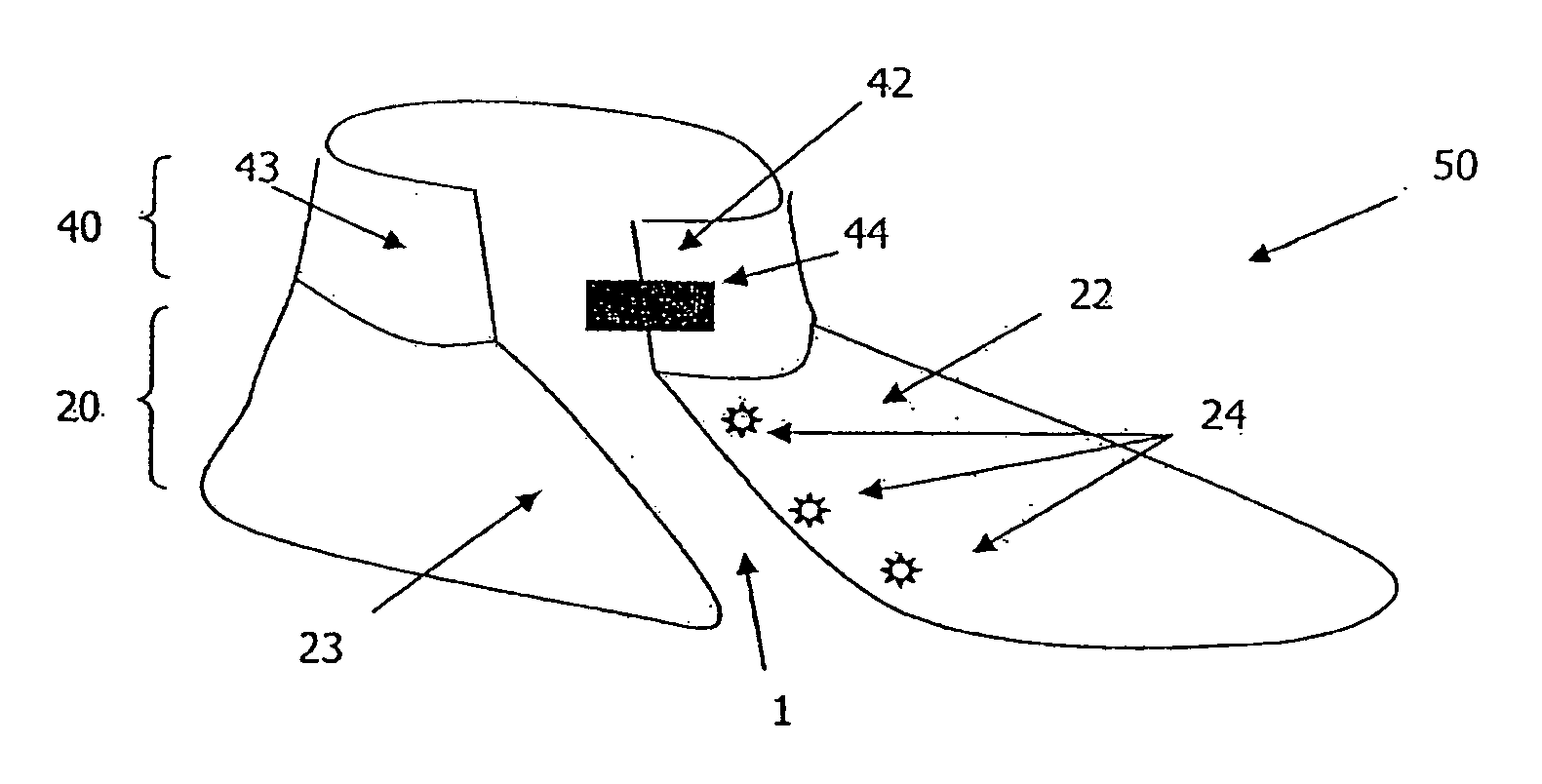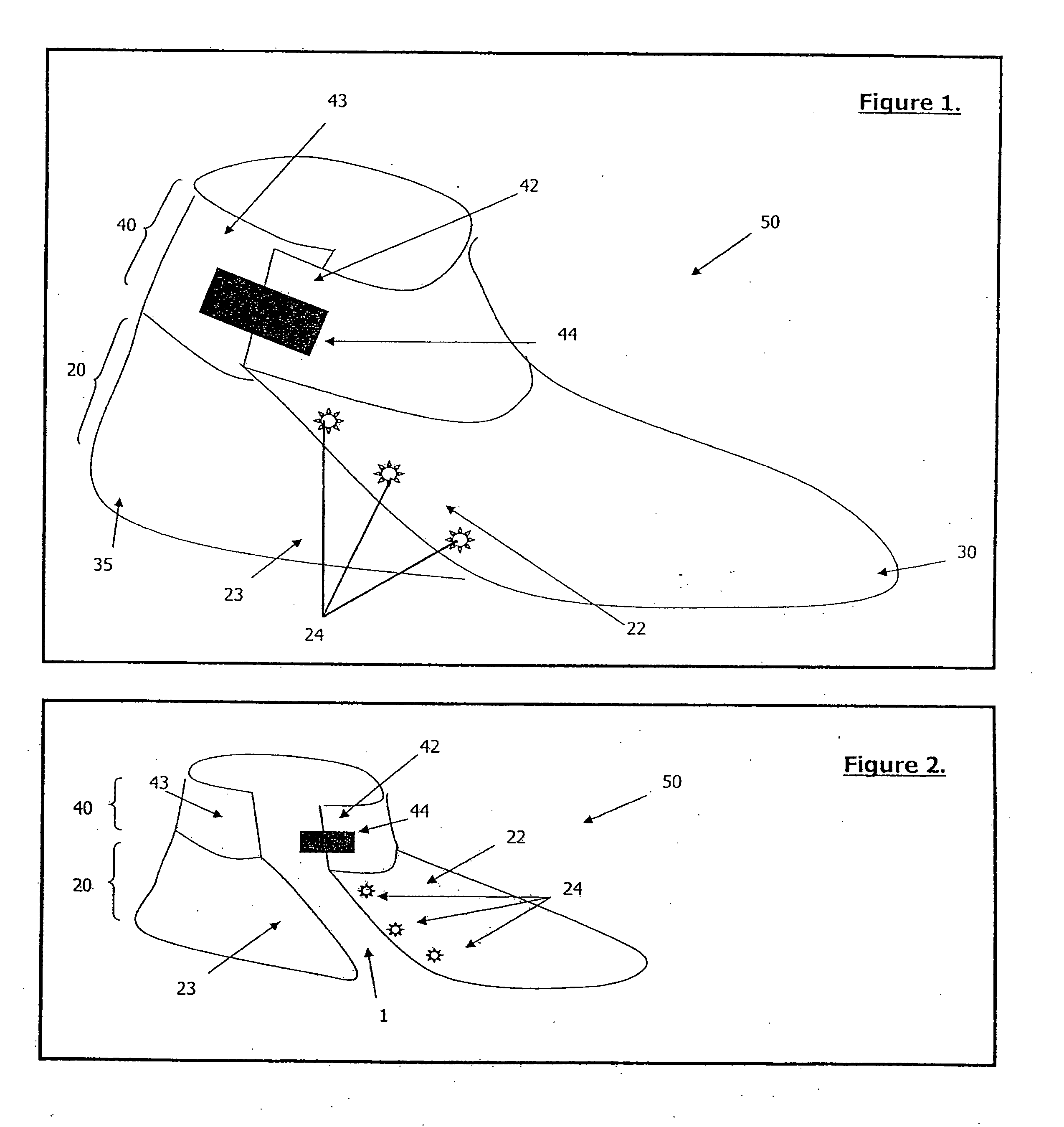Footwear cover
a technology for shoes and limbs, applied in the field of shoes covers, can solve the problems of liquid adding undesirable weight, affecting the performance of the shoe and its wearer, and affecting so as to maintain the function of the shoe and the wearer's limbs
- Summary
- Abstract
- Description
- Claims
- Application Information
AI Technical Summary
Benefits of technology
Problems solved by technology
Method used
Image
Examples
Embodiment Construction
[0025]The present invention will now be described more fully hereinafter with reference to the accompanying drawings, in which preferred embodiments of the invention are shown. This invention may, however, be embodied in many different forms and should not be construed as limited to the illustrated embodiments set forth herein. Rather, these illustrated embodiments are provided so that this disclosure will be thorough and complete, and will fully convey the scope of the invention to those skilled in the art.
[0026]As seen in the embodiment depicted in FIG. 1, the footwear cover 50 has two main parts: an upper part 40 with an overlapping portion 42 and an overlapped portion 43, and a lower part 20 with an overlapping portion 22 and an overlapped portion 23. The front portion 30 and heel portion 35 will correspond to the toe and heel regions of footwear, respectively. The lower part 20 primarily covers the shoe upper (the portion of a shoe that covers the sides and top of a foot and at...
PUM
 Login to View More
Login to View More Abstract
Description
Claims
Application Information
 Login to View More
Login to View More - R&D
- Intellectual Property
- Life Sciences
- Materials
- Tech Scout
- Unparalleled Data Quality
- Higher Quality Content
- 60% Fewer Hallucinations
Browse by: Latest US Patents, China's latest patents, Technical Efficacy Thesaurus, Application Domain, Technology Topic, Popular Technical Reports.
© 2025 PatSnap. All rights reserved.Legal|Privacy policy|Modern Slavery Act Transparency Statement|Sitemap|About US| Contact US: help@patsnap.com



